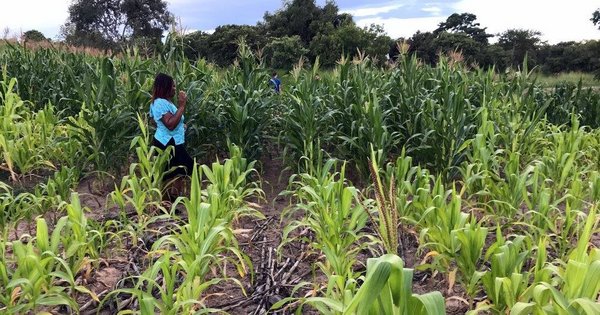 Read this article in French
Read this article in French- Share this article
- Subscribe to our newsletter
Mineral fertilisation and agroecology are not incompatible in Africa
Are agroecological approaches, based for example on the use of legumes and manure, enough by themselves to ensure a long-term increase in annual crop yields in sub-Saharan Africa (SSA), without using more mineral fertiliser?
The answer is no, according to a team of agronomists from CIRAD, the International Maize and Wheat Improvement Center (CIMMYT), the International Institute of Tropical Agriculture (IITA), Wageningen University/Netherlands and the African Plant Nutrition Institute (APNI), who have published an in-depth analysis of 150 scientific articles on annual crops (maize, sorghum, millet, rice, cassava, etc.) and tropical legumes, both annual grain legumes (cowpea, groundnut) and legume trees (acacia, sesbania) in tropical environments.
Analysis containing 50 years of knowledge on nutrient balances
These publications collate 50 years of knowledge on nutrient balances in sub-Saharan Africa, biological nitrogen fixation by tropical legumes, manure use in smallholder farming systems and the environmental impact of mineral fertiliser.
The article highlights five reasons why more mineral fertiliser is needed in sub-Saharan Africa:
- Farming systems are characterised by very low mineral fertiliser use, widespread mixed crop-livestock systems and significant crop diversity, including legumes. Inputs of mineral elements to crops by farmers are insufficient, resulting in a widespread decline in soil fertility due to soil nutrient mining.
- The nitrogen requirements of crops cannot be met solely through biological nitrogen fixation by legumes and manure recycling. Legumes can only fix atmospheric nitrogen if symbiosis with soil bacteria functions correctly, which requires absorption of different mineral elements by the plant. According to the scientists, the ability of legumes to capture nitrogen from the air through their symbiosis with rhizobium bacteria is a fantastic opportunity for smallholder farmers, but the amounts on nitrogen fixed will be very small unless other nutrients such as phosphorus are supplied through fertilisers.
- Phosphorus and potassium are often the main limiting factors of the functioning of plants and living organisms, including symbiotic bacteria. If there is not enough phosphorus and potassium in soils, then there is no nitrogen fixation. These nutrient elements, phosphorus, potassium and micro-elements, need to be provided by fertilisers, since legumes, which draw these elements directly from the soil, cannot supply them. In the case of manure, this is simply a transfer from grazing areas to cultivated areas, which gradually reduces fertility in the former.
- If used appropriately, mineral fertilisers have little impact on the environment. The greenhouse gas emissions linked to nitrogen fertiliser use can be controlled through a balanced and efficient application. In addition, mineral fertilisers can be produced more efficiently in order to reduce the impact of their production on greenhouse gas emissions, keeping in mind that this impact is low, at around one per cent of total anthropogenic emissions.
- Further reducing mineral fertiliser use in SSA would hamper productivity gains and would contribute directly to increasing food insecurity and indirectly to agricultural expansion and deforestation. Producing for a population that will double by 2050 is likely to require the use of more agricultural land. An extensive strategy thus harms biodiversity and contributes to increasing greenhouse gas emissions, contrary to an agroecological intensification strategy combined with efficient and moderate mineral fertiliser use.
However, agroecological principles linked directly to improving soil fertility, such as recycling of mineral and organic elements, crop efficiency and diversity, with for example agroforestry practices and cereal-legume intercropping, remain essential to improve soil health, the scientists write in their analysis. “Soil fertility is based on its organic matter content, provided by plant growth that determines the biomass that is returned to the soil in the form of roots and plant residues. Efficient mineral fertiliser use starts a virtuous circle. These nutrients are crucial for the sustainability of agricultural productivity,” says Gatien Falconnier, lead author of the study and researcher at CIRAD in Zimbabwe.
The researchers therefore argue for a nuanced position that recognises the need to increase mineral fertiliser use in sub-Saharan Africa, in a moderate manner based on efficient practices, in conjunction with the use of agroecological practices and appropriate policy support.
(CIRAD/wi)
Reference:
Falconnier, G. N., et al.: The input reduction principle of agroecology is wrong when it comes to mineral fertilizer use in sub-Saharan Africa. Outlook on Agriculture, Vol. 52, Issue 3, Sep. 2023; https://doi.org/10.1177/00307270231199795





Add a comment
Be the First to Comment